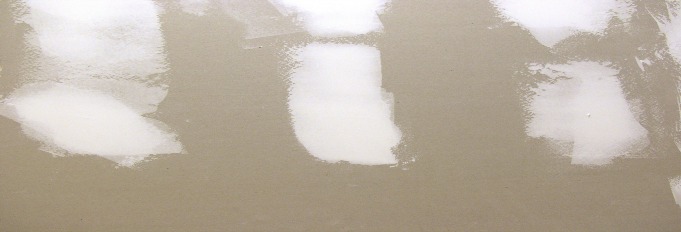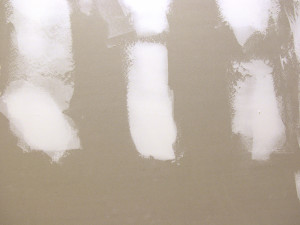“Details. Pay attention to details.”
Patching drywall and smoothly patching drywall are two completely different animals.
I think I created a hybrid creature when I taught myself how to patch the lovely hole an unwieldy piece of furniture created in my wall. You can tell it’s patched if you pay attention, but unless you look closely it looks all right.
My first attempt at patching didn’t go so well. The layers were too thick, I hadn’t spent enough time sanding, and, well, it looked awful. Definitely an amateur job. So I grabbed the sandpaper, tub of mud, and went back to work.
While sanding and then smoothing on another layer of drywall mud, the thought struck me just how similar patching a wall is to patching a story.
A lousy fix is glaringly noticeable in both forms, just like a careful, well-done patching job blends into the wall or the text like part of the original design.
I had a wall to patch. I also have a novel. It’s needed a lot of “patching” – scenes cut, scenes added, more layers of depth smoothed into the main plot, the characters, and all the tiny little threads woven throughout the story. If I mess with one, I might as well have messed with them all.
It’s so easy to toss something in or pull something out, whether it be a phrase or an entire chapter, and then be done with it. Just like it would have been easy for me to leave the nasty patch on my wall and forget it (except I’m a perfectionist, so it would have bugged me daily).
But simplicity usually doesn’t equal quality.
How does one go about smoothly patching a story?
Details. Pay attention to details. I find the highlighting function of my word processor very handy for this kind of editing. Highlight the main thing you want to cut, add, or somehow change. Then go through the surrounding section and highlight any collateral damage “edges” that will need fixed after the main change. Make the changes, smoothing those edges and then make a note of certain things you need to keep an eye out for further along in the story, the offhand bit of dialogue referencing that scene you just cut out, or a good spot to add a reference to that shocking revelation you just added. Even one misplaced or wrongly-left sentence dealing with a plot thread that no longer exists, or nonexistent references that should be there about a new thread, count.
Just like my wall patch. Every bit of mudding (adding or removing text), sanding (smoothing away the roughness), and painting (the polish of pretty prose) counts. Homeowners notice poorly done repair. Readers do too.



Nice job, Hannah! Love applying real life stuff to writing 🙂 Keep it up!
Wow. Great article Hannah!
I’m really not a perfectionist at all, so I often just glance over my novel, with a “good enough” attitude. But I probably should really get down into the details with my story. I bet it would make a huge difference.
Where’s the like button! XD This was great! Thanks. 🙂
Thanks, all. I’m glad you enjoyed this article!